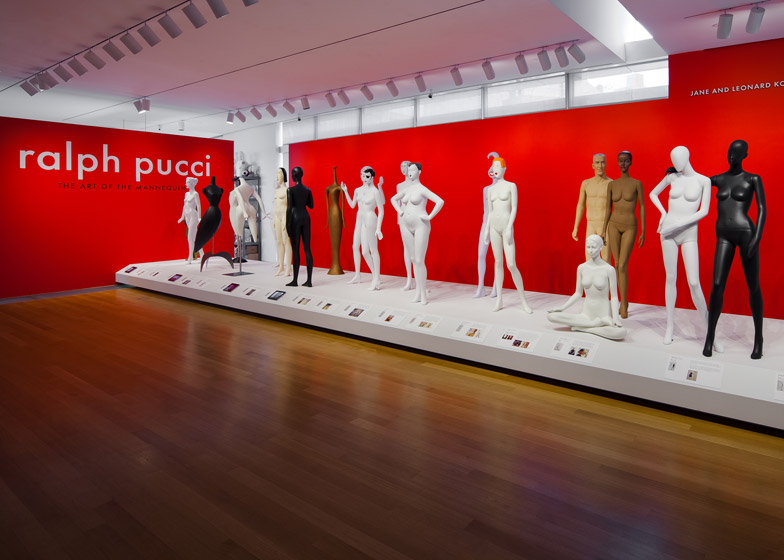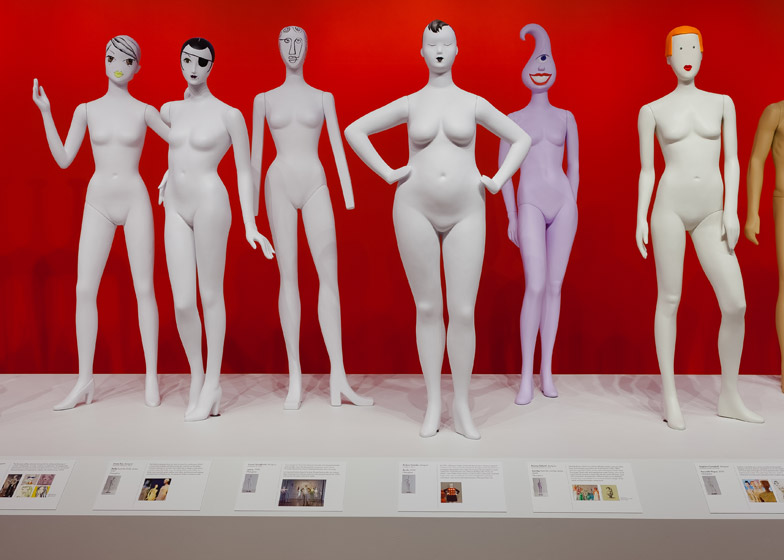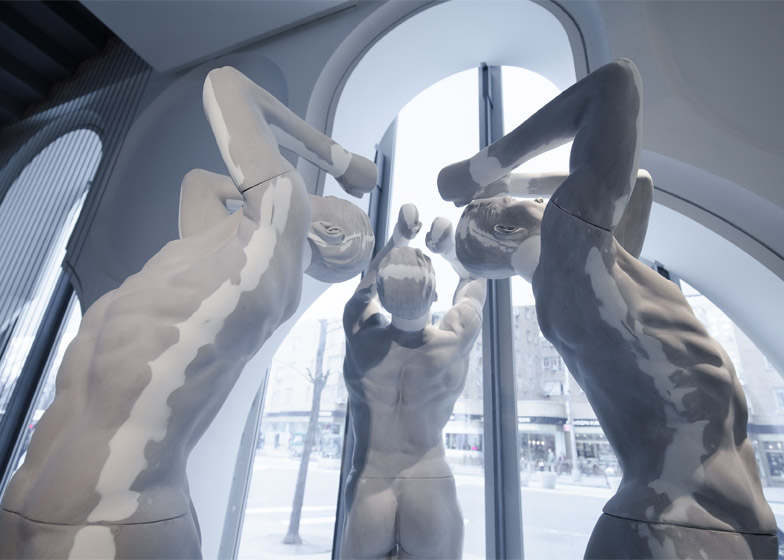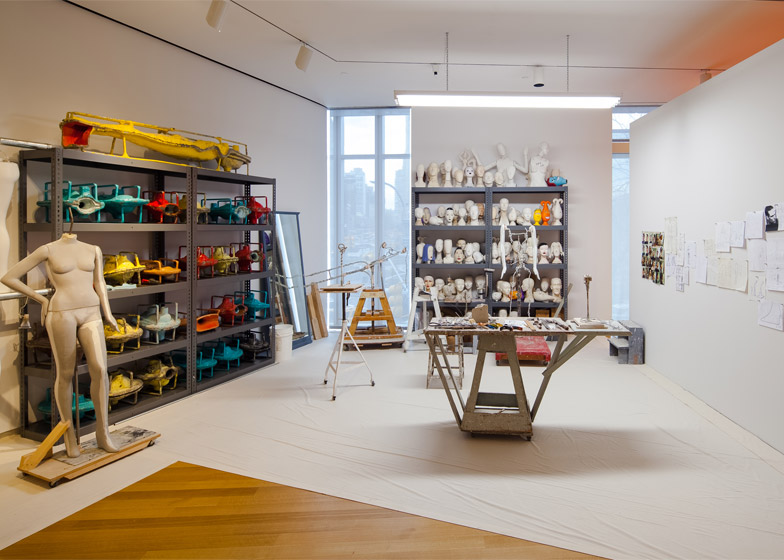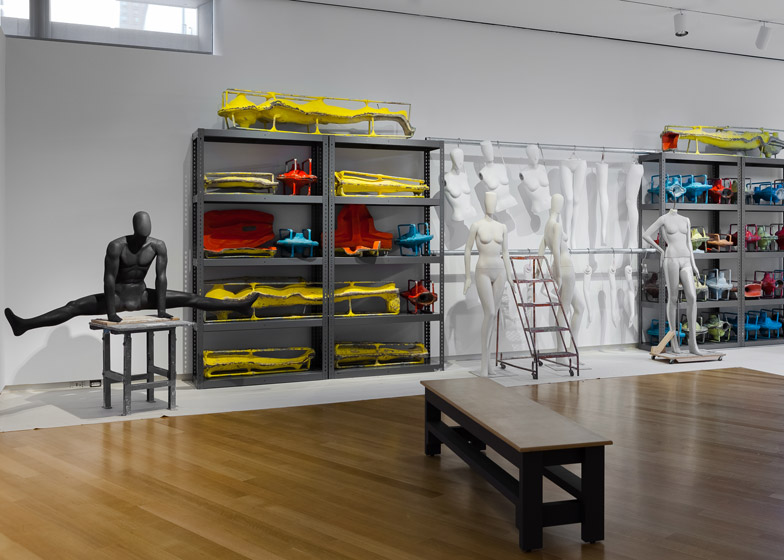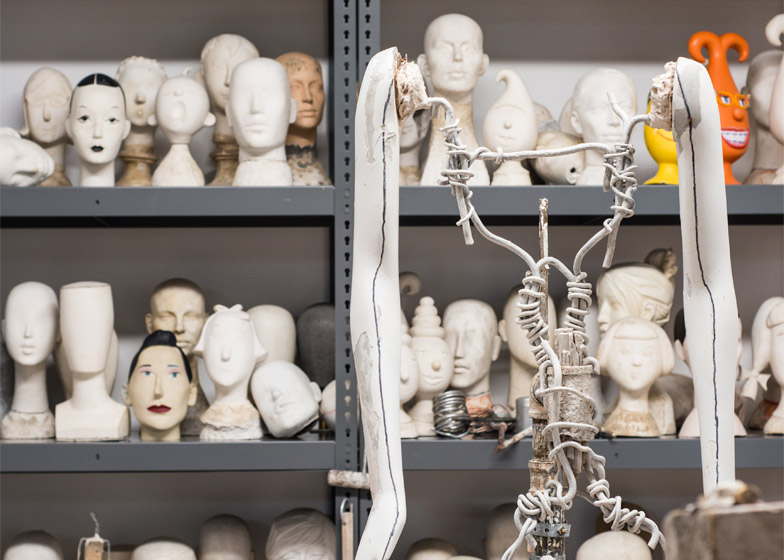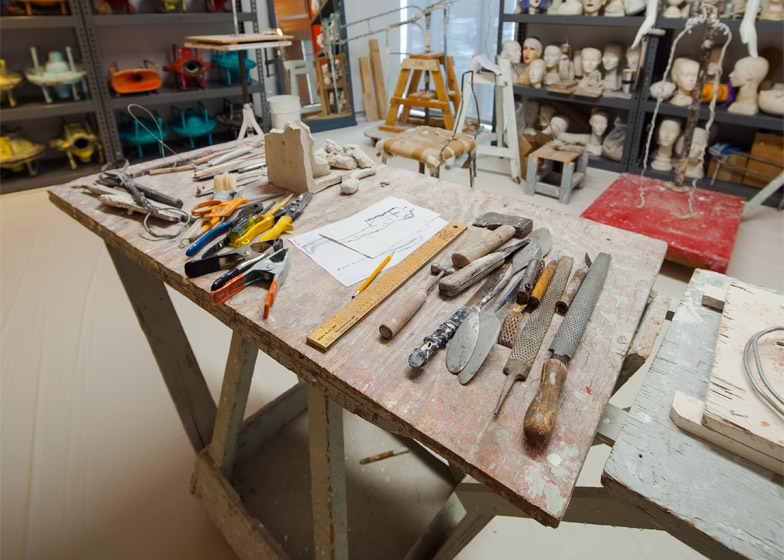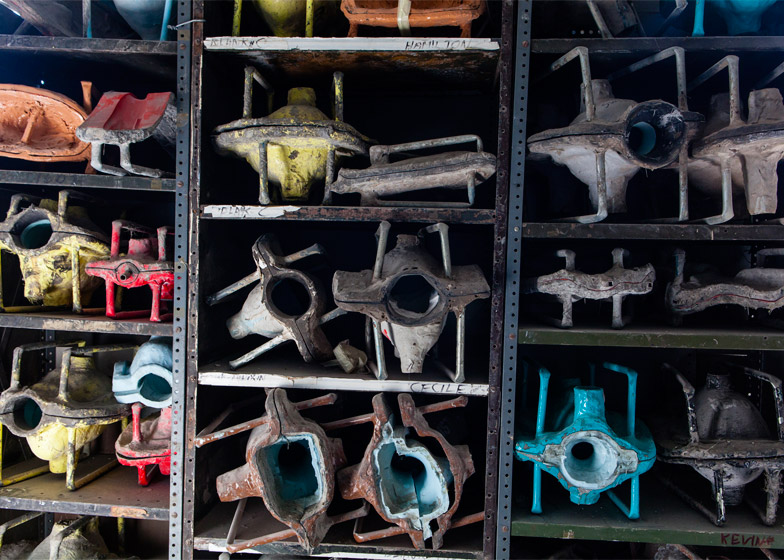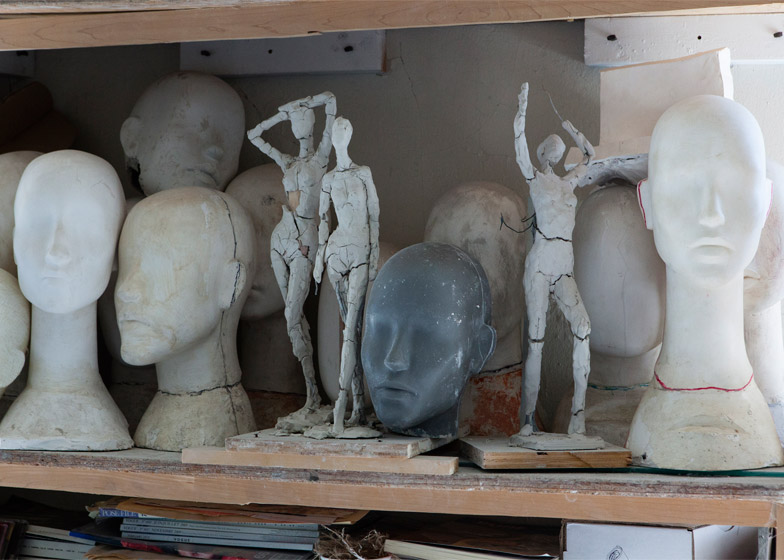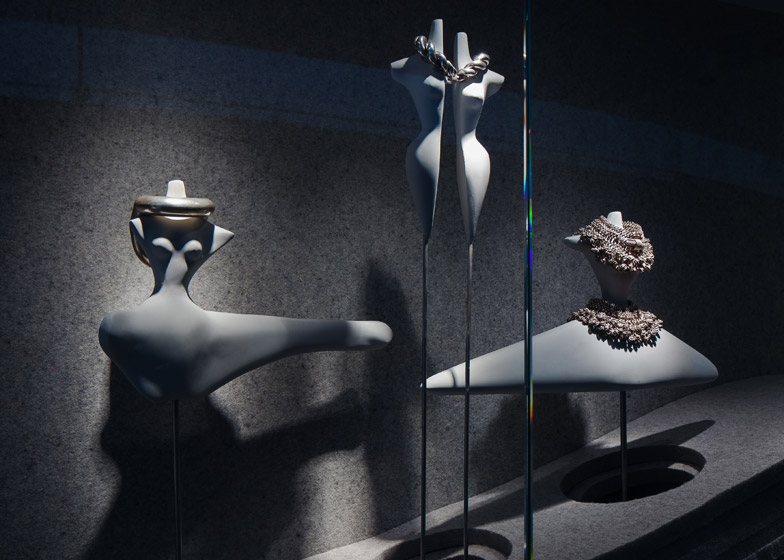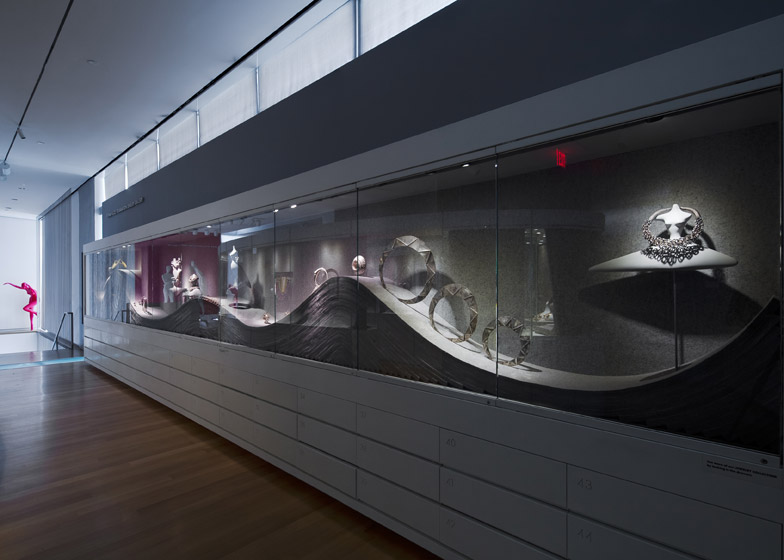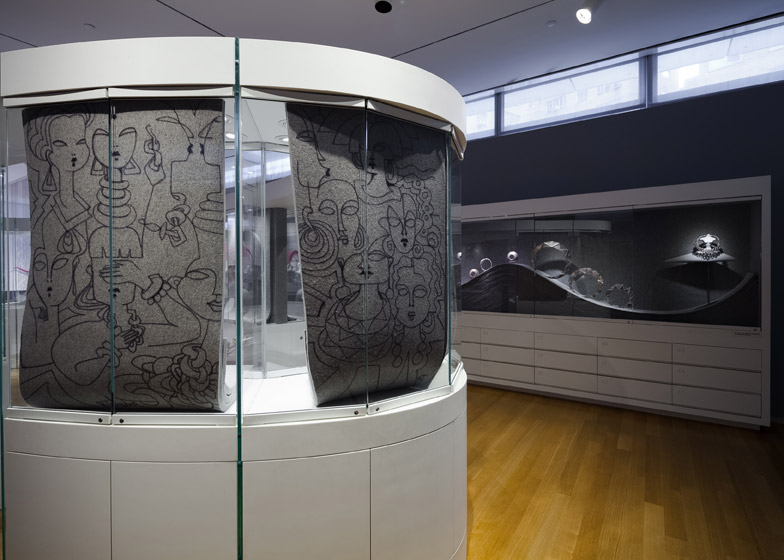An exhibition at New York's Museum of Arts and Design celebrates the work of Ralph Pucci, whose mannequin designs chronicle changes in visual culture over more than 30 years (+ slideshow).
Ralph Pucci: the Art of the Mannequins occupies a floor of the Manhattan museum, and includes a selection of mannequins dating from the 1980s to the 2000s, as well as a mini sculptor's studio for live model-making demonstrations.
"Mannequins are an important branch of creative design, and a vital element of our visual culture," explained exhibition curator Barbara Paris Gifford.
"We see them every day but often glide past them, more concerned with the garments they are used to display," she told Dezeen. "In this sense they are sort of like the frames on paintings you see in museums – crucial to the visual impression but often overlooked."
The 24 mannequins selected from Pucci's archive for the show include Birdland – a collaboration with Cuban-American artist Ruben Toledo from 1988 – a dark grey headless and armless form on a silver metal claw-like base, with a solid curved lower half like a wasp's body instead of legs.
Other pieces include Swirley, a purple cyclops mannequin from 2000 produced in collaboration with American artist Kenny Scharf, and the Olympian Goddess – a gold amazonian figure from 1986, designed with French product designer Andrée Putman. The mannequins are displayed against a red background, with a smaller group on a circular white plinth.
"When the purpose of the object is to mirror how we want to see ourselves, it's not difficult to have exceptional stories to tell," said Gifford.
"As we heard the stories behind Ralph Pucci's mannequins, we realised that our visitors could take a type of cultural tour through the 1980s, 1990s and 2000s while viewing them. He has explored shifting standards of beauty, including ethnic diversity, 'plus size' silhouettes, and powerfully muscular female forms."
Sport, a hand-stand mannequin from 2007, and Motion2, a crouching form from 2013, are both examples of Pucci's experiments with capturing movement in his designs.
"Ralph Pucci is among the top class of makers whose business is still in New York City and whose objects are still made by hand," said Gifford.
"Their design and making process typifies the intersection between art, craft, and design," she added. "Ralph put motion into mannequins; he experimented wildly with what the mannequin heads in particular could look like and presented sculptural forms to the trade that did not reflect the human body at all."
Pucci began working with mannequins when he joined his family business in 1976 and has since gone on to expand his showroom to encompass furniture and lighting by international designers.
"We did not have a designer so the responsibility went to me," he told Dezeen. "The first idea that we approached was action mannequins. It was a big success so my confidence in designing and capturing the moment in time was strong."
He has since collaborated with a wide range of artists and designers on the dummies, including Putman, Scharf, and Isabel and Ruben Toledo, as well as fashion designers Diane von Furstenberg and Anna Sui, and French architect Patrick Naggar.
"Pucci's mannequins in many cases were ahead of their time," said Gifford. "He collaborated with a wide range of creative people from the art world, furniture/design world, fashion, and even from the children's book illustration field."
"Most of these people had never worked with mannequins before, so they brought their own language to their design, which resulted in very unique forms that completely redefined the format's possibilities."
Pucci works with sculptor Michael Evert, who creates maquettes to develop each design before producing a full-size version in clay, which is then used as the master for moulding the fibreglass mannequins.
"It must wear clothes and have a strong purpose in a store yet be visually strong and unique," explained Pucci. "Exciting mannequins should always be changing and evolving. They should be a reflection of pop culture, fashion, art, sculpture, music, and dance."
A small version of Evert's workshop has been replicated for the exhibition, with shelves of mannequin parts alongside rows of legs and arms that dangle from supports against a white background.
This space will host live demonstrations of Evert's work process throughout the show's run, and a film about Pucci's mannequins and their impact plays on a loop on an opposite wall.
Miniature versions of some of the mannequins created with the Toledos have also been produced for an exhibition of jewellery in the small gallery area to one side of the exhibition space.
The exhibition will run at MAD until 30 August.
Photography is by Antoine Bootz, unless specified otherwise. Images courtesy of MAD.

